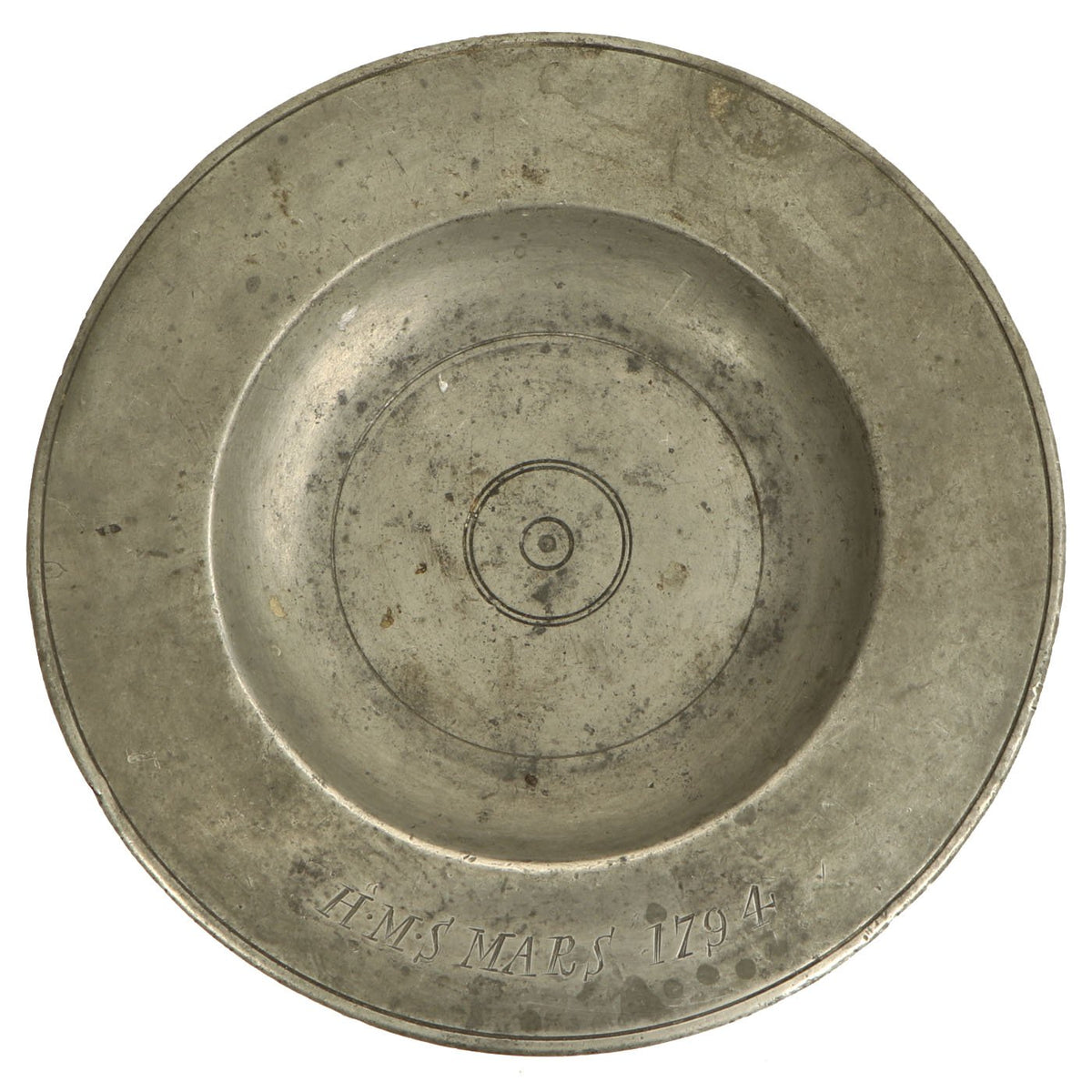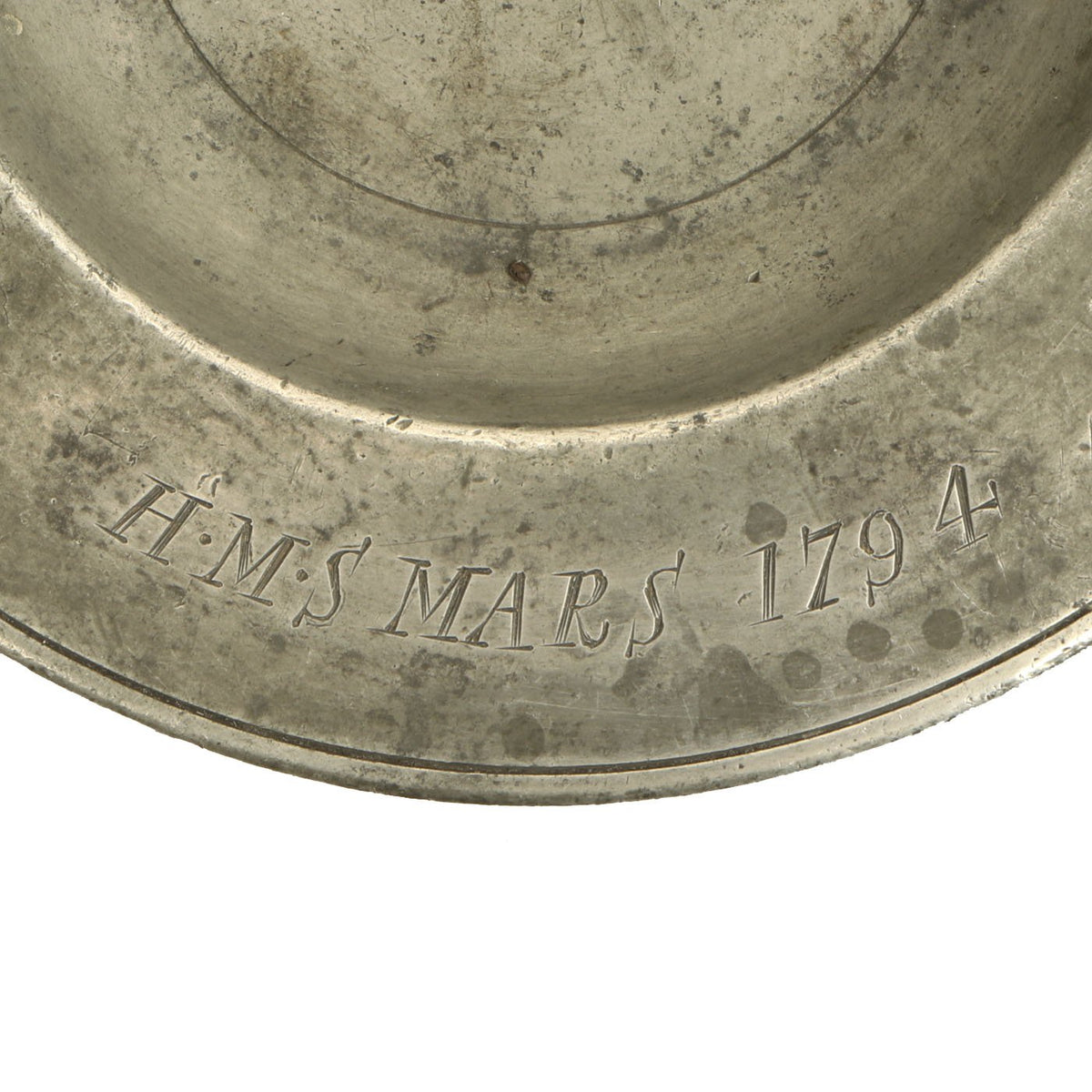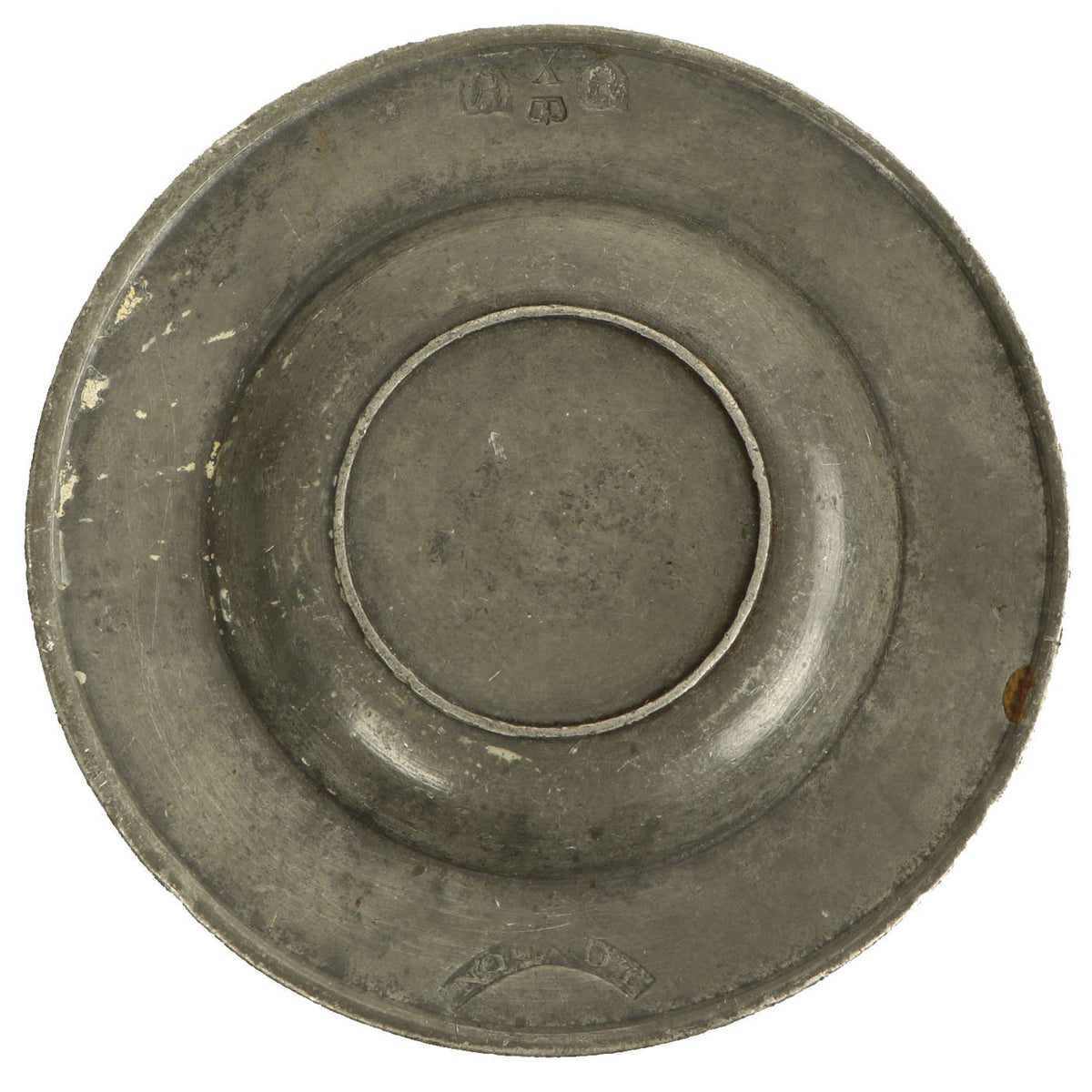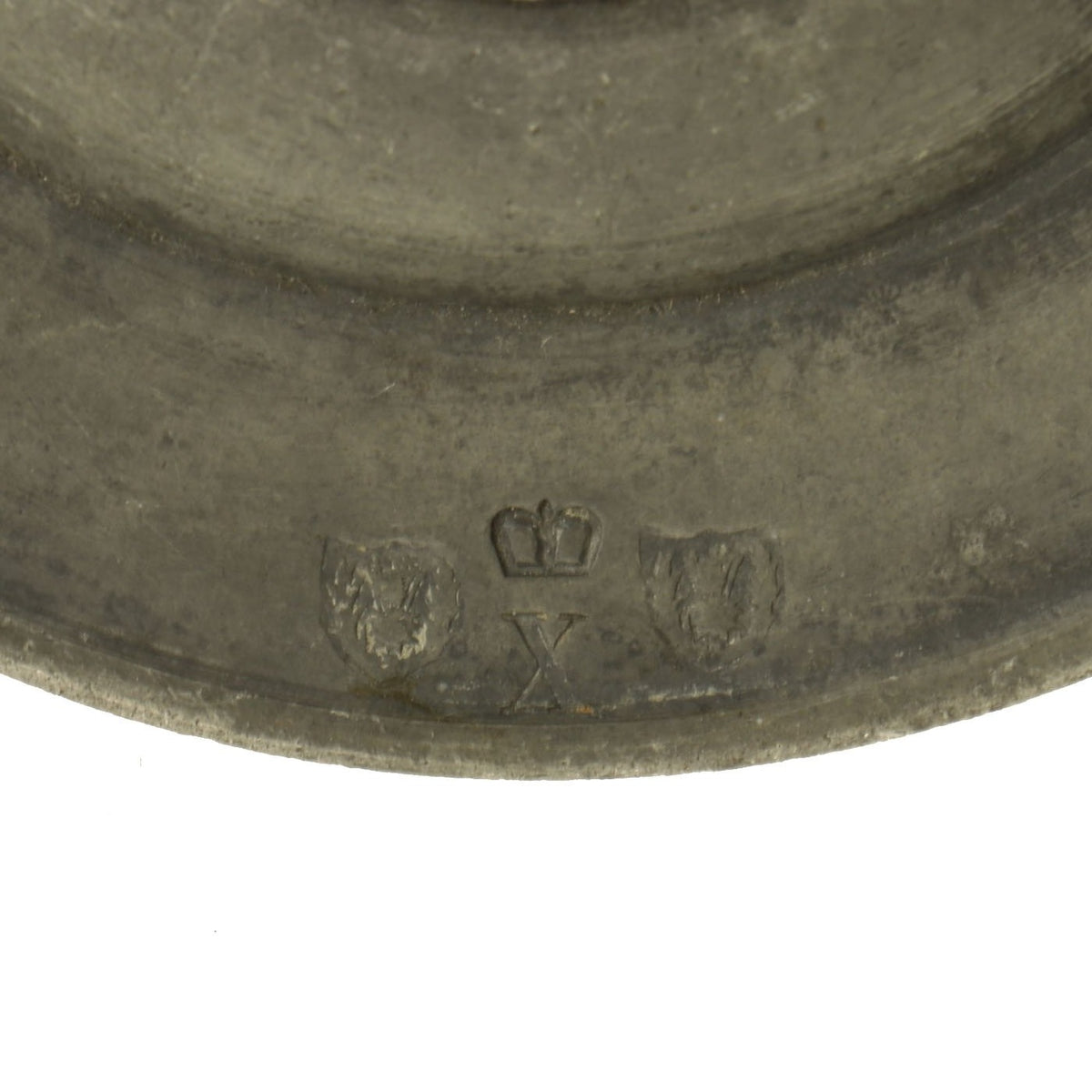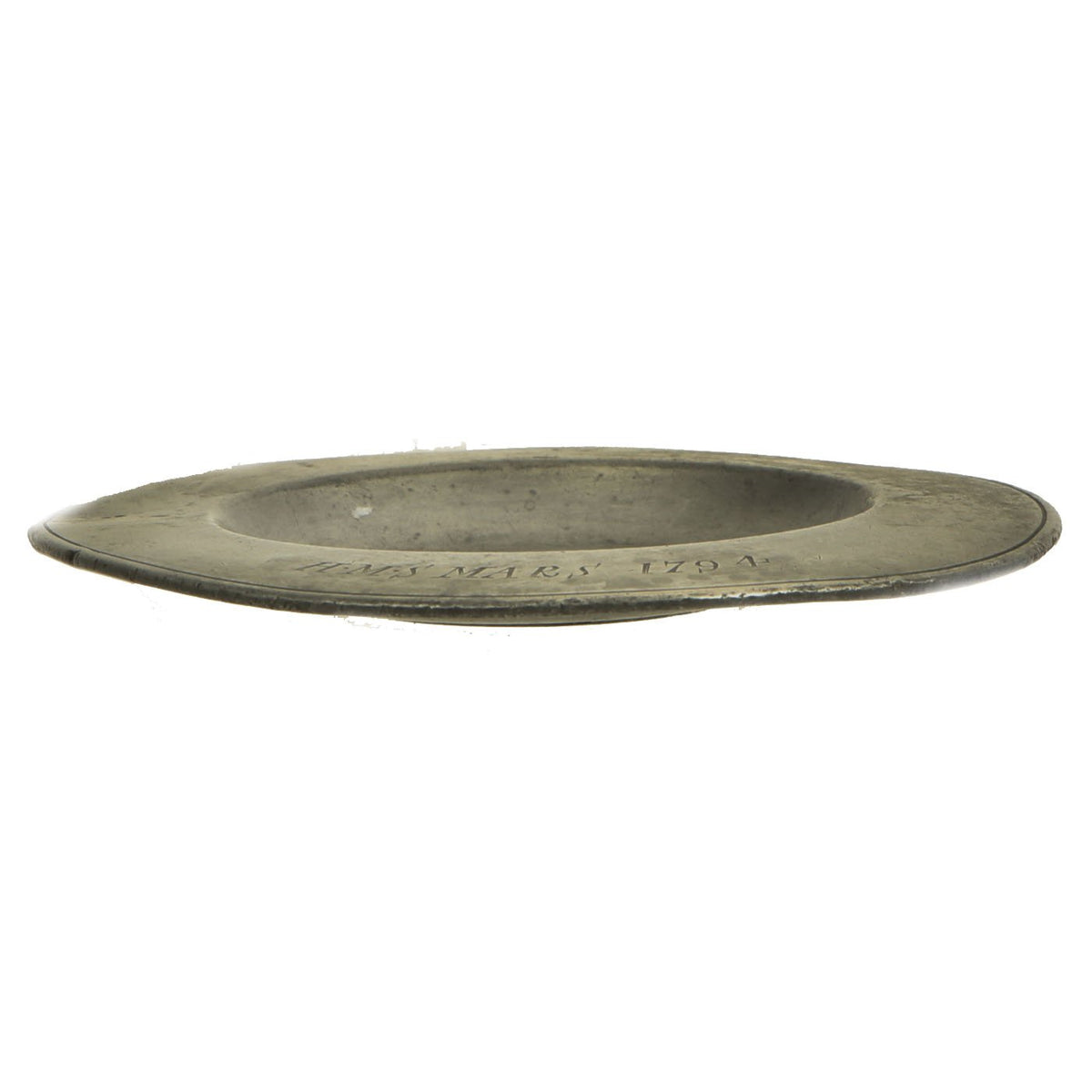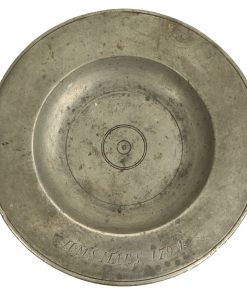Original British Napoleonic Scottish Made Pewter Small Dish marked to H.M.S. MARS 1794 Original Items
$ 450,00 $ 135,00
Original Item: Only One Available. This is a very nice pewter pewter small dish, or possibly a saucer, measuring 4 5/8″ in diameter. It is clearly marked H-M-S MARS 1794 on the top, indicating service on the well-known vessel during the Napoleonic Wars. Given the extremely small bowl portion of the dish, we assume it was for small portions or sides, or possibly just a saucer to go under a drink.
The rear is marked LONDON in an ark, but it also has “Thistle” Assay marks from Scotland, as well as a CROWN / X proof mark. Pewter marks in Britain are some what confusing, however in general the “Crowned Rose” was used England, while a “Crowned Hammer” and after the 17th century a “Thistle” was used in Scotland to denote the same quality. The Crown / X mark indicates that the dish is “Hard Metal” ware, an alloy of ten parts of tin to one of lead. This is the correct marking for this era and type of flatware.
A very nice Napoleonic Wars Era saucer or small plate, offered in fine condition and ready to display!
History of the H.M.S. Mars-
HMS Mars was a 74-gun third-rate ship of the line of the Royal Navy, launched on 25 October 1794 at Deptford Dockyard.
In the early part of the French Revolutionary Wars she was assigned to the Channel Fleet. In 1797 under Captain Alexander Hood she was prominent in the Spithead mutiny. In 1798 at the Battle of the Raz de Sein she fought a famous single-ship duel with the French seventy-four Hercule, in the dusk near the Pointe du Raz on the coast of Brittany. Hercule attempted to escape through the Passage du Raz but the tide was running in the wrong direction and she was forced to anchor, giving Captain Hood the chance to attack at close quarters. The two ships were of equal strength, but Hercule was newly commissioned; after more than an hour and a half of bloody fighting at close quarters she struck her flag, having lost over three hundred men. On Mars 31 men were killed and 60 wounded. Among the dead was Captain Hood.
Fight between Mars and Hercule
Mars fought at Trafalgar in 1805 where she was heavily damaged as she took fire from five different French and Spanish seventy-fours. Among the 29 killed in the action was her captain, George Duff, and there were also 69 wounded. This gave a total of 98 casualties out of a complement of 615.
In 1806, on service in the Channel fleet she took part in an action off Chasseron which led to the capture of four French ships. She afterwards served off Portugal and in the Baltic Sea. Later she was broken up for scrap in 1823.
Fast Shipping with Professional Packaging
Thanks to our longstanding association with UPS FedEx DHL, and other major international carriers, we are able to provide a range of shipping options. Our warehouse staff is expertly trained and will wrap your products according to our exact and precise specifications. Prior to shipping, your goods will be thoroughly examined and securely secured. We ship to thousands clients each day across multiple countries. This shows how we're dedicated to be the largest retailer on the internet. Warehouses and distribution centres can be located throughout Europe as well as the USA.
Note: Orders with more than one item will be assigned a processing date depending on the item.
Before shipping before shipping, we'll conduct a thorough inspection of the items you have ordered. Today, the majority of orders will be delivered within 48 hours. The delivery time will be between 3-7 days.
Returns
The stock is dynamic and we cannot completely manage it because multiple stakeholders are involved, including our factory and warehouse. So the actual stock may alter at any time. It's possible that you may not receive your order once the order has been made.
Our policy is valid for a period of 30 days. If you don't receive the product within 30 days, we are not able to issue a refund or an exchange.
You can only return an item if it is unused and in the same state as the day you received it. You must have the item in its original packaging.
Related products
Uncategorized
Uncategorized
Uncategorized
Uncategorized
Armoured Fighting Vehicles of the World: AFVs of World War One (Hardcover Book) New Made Items
Uncategorized
Uncategorized
Uncategorized
Uncategorized
Uncategorized
Band of Brothers ORIGINAL GERMAN WWII Le. F.H. 18 10.5cm ARTILLERY PIECE Original Items
Uncategorized
Uncategorized
Uncategorized
Uncategorized
Uncategorized
Uncategorized
Uncategorized
Uncategorized
Uncategorized
Uncategorized
